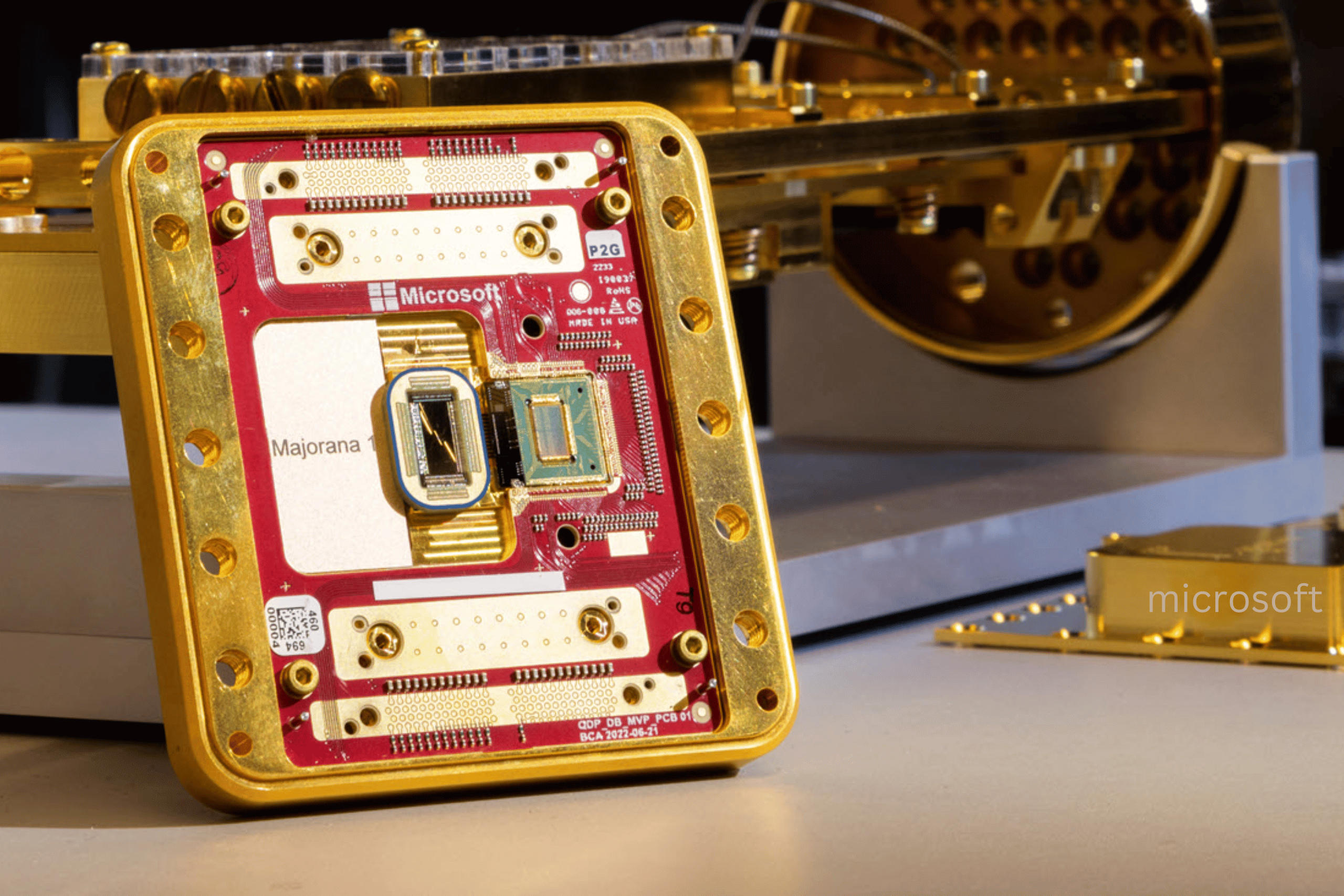
Microsoft has unveiled a groundbreaking innovation in quantum computing with the introduction of Majorana 1, the world’s first quantum chip powered by a Topological Core architecture. This breakthrough represents a major leap in quantum technology, bringing industrial-scale quantum computing closer to reality within years, rather than decades.
A New Era of Quantum Computing
At the heart of Majorana 1 is a revolutionary material known as a topoconductor—a topological superconductor that enables the creation and control of Majorana particles. These exotic particles form the foundation for a new kind of qubit, the building blocks of quantum computers. Unlike traditional qubits, topological qubits are inherently more stable and require less error correction, allowing for faster and more scalable computations.
“We took a step back and asked, ‘What would the transistor for the quantum age look like?’” explained Chetan Nayak, Microsoft technical fellow. “That question guided us to develop the materials and architecture needed for this new kind of qubit.”
Microsoft’s approach culminated in the development of a custom materials stack, designed atom by atom, to coax Majorana particles into existence. This stack combines indium arsenide, a semiconductor known for its unique properties, with aluminum to create a hybrid material capable of forming a topological state of matter. This state is neither solid, liquid, nor gas but an entirely new form of matter that is key to the chip’s functionality.
The Path to One Million Qubits
The Majorana 1 chip offers a clear path to achieving a quantum computer with one million qubits on a single chip that fits in the palm of your hand. This milestone is critical for enabling transformative, real-world solutions across industries, from breaking down microplastics to designing self-healing materials. For instance, such a quantum computer could address problems like creating catalysts to combat pollution, designing non-toxic materials, or even developing sustainable agriculture solutions for global food security.
“Whatever you’re doing in the quantum space needs a path to a million qubits,” Nayak emphasized. “Without it, you’ll hit a wall before achieving the scale required to solve significant problems.”
The topological qubit design also introduces digital control, simplifying the quantum computing process. Unlike conventional qubits, which rely on fine-tuned analog controls, Microsoft’s qubits use voltage pulses to enable precise measurements and control—a process as simple as flipping a switch.
A Quantum Leap in Design and Functionality
This architecture provides unprecedented scalability. Majorana 1’s design incorporates a modular structure, where each “H”-shaped nanowire contains four Majoranas, forming a single qubit. These modules can be tiled across the chip, streamlining production and paving the way for utility-scale quantum computers.
The development of Majorana 1 also required overcoming significant scientific and engineering challenges. Creating a reliable topological state of matter necessitated extreme precision in material fabrication. “We literally spray atom by atom,” said Krysta Svore, Microsoft technical fellow. “Too many defects in the material stack can destroy the qubit’s functionality.”
Microsoft’s efforts have been validated by peer-reviewed research, including a recent paper published in Nature, confirming the creation and measurement of Majorana particles. These advancements have positioned Microsoft as one of two companies advancing to the final phase of DARPA’s Underexplored Systems for Utility-Scale Quantum Computing (US2QC) program, which aims to deliver fault-tolerant quantum systems for commercial and national security applications.
Transforming Industries with Quantum Power
The implications of this technology are vast. Quantum computers powered by Majorana 1 will be capable of performing trillions of reliable operations, enabling breakthroughs in fields like materials science, healthcare, and environmental sustainability. For example:
- Chemistry and Materials Science: Quantum computing could uncover why materials corrode or crack, leading to the development of self-healing materials for bridges, airplanes, and consumer electronics.
- Environmental Solutions: Quantum systems could calculate properties of catalysts to break down microplastics or develop alternatives to toxic materials, aiding in pollution control.
- Healthcare and Agriculture: By simulating enzyme behaviors with unprecedented accuracy, quantum computing could revolutionize drug development, boost soil fertility, and create sustainable food production methods.
Combining quantum computing with AI could further accelerate innovation. “The quantum computer teaches the AI the language of nature,” said Matthias Troyer, Microsoft technical fellow. “It can provide precise recipes for materials or molecules, enabling engineers and scientists to design things perfectly the first time.”
Looking Ahead
While significant engineering work remains, the development of Majorana 1 marks a pivotal moment in quantum computing. Microsoft’s topological qubit architecture, integrated with its Azure Quantum platform, promises to redefine the possibilities of computation. By making scalable, fault-tolerant quantum systems a reality, Microsoft is opening the door to solving some of humanity’s most pressing challenges with unparalleled precision and efficiency.






Leave a Reply